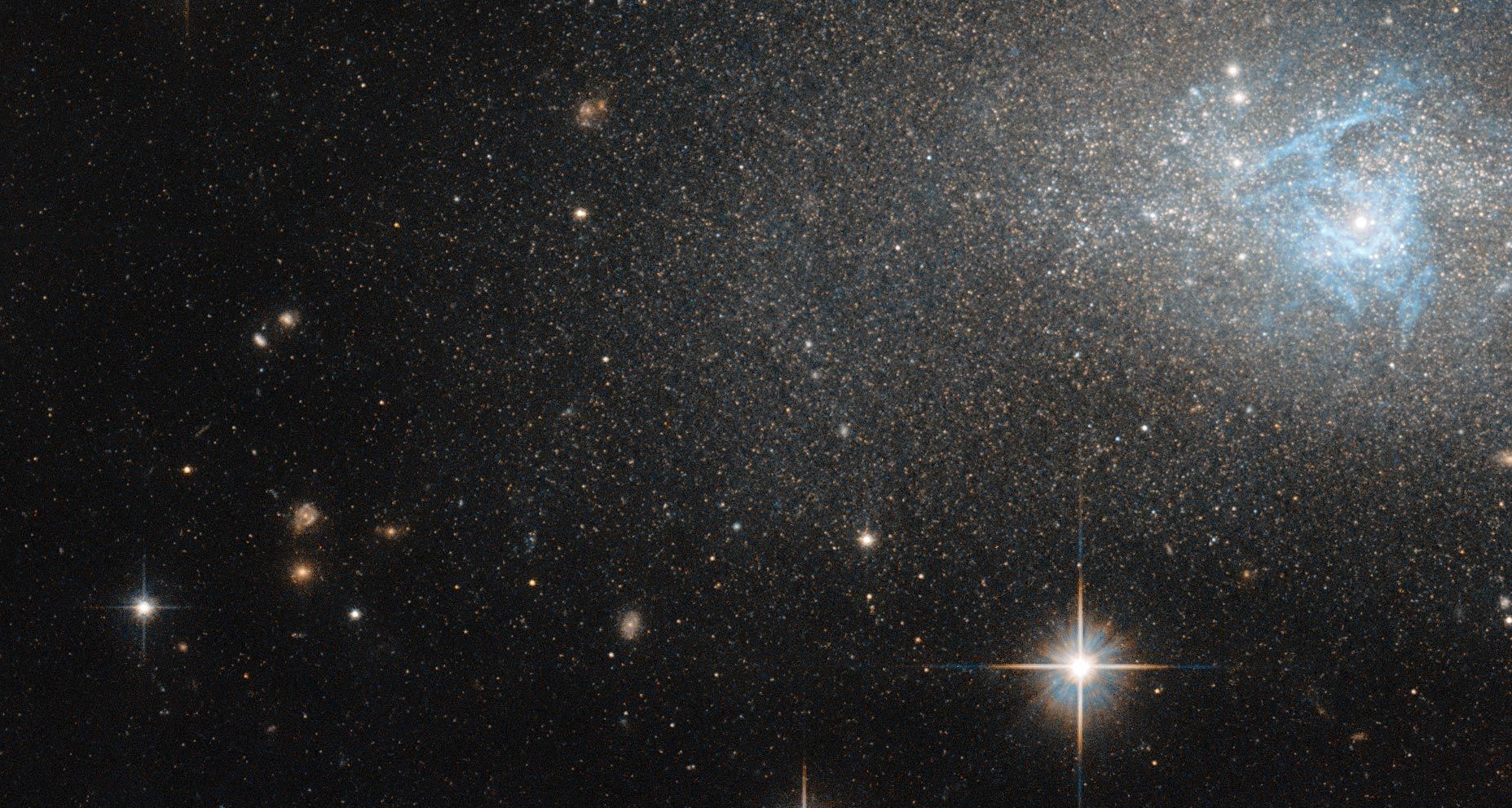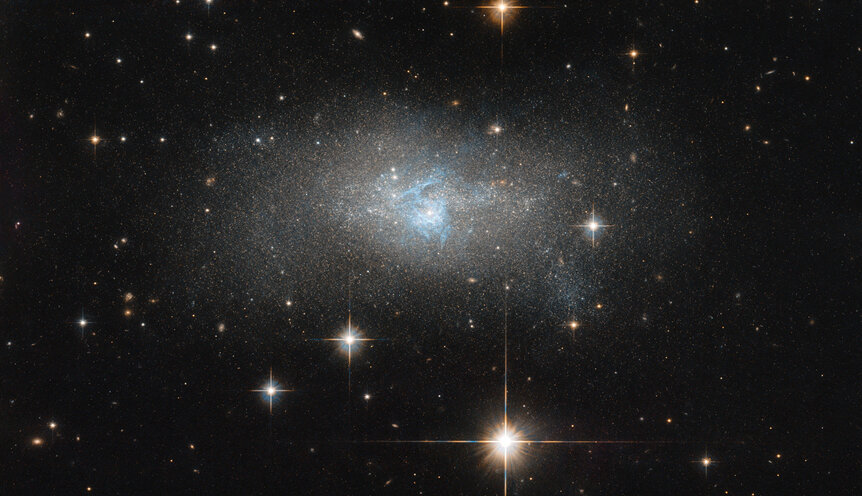Create a free profile to get unlimited access to exclusive videos, sweepstakes, and more!
IC 4870, the mystery galaxy

Almost every time I see an image from Hubble or some other telescope showing a beautiful galaxy, I get inspired. I want to show y'all the image, of course, because of its beauty, but to be honest anyone can do that. I want more.
I'm an astronomer, and a science communicator. I love pretty pictures for their artistry, of course, but I want to use them as a gateway to the science. The two are intertwined, so dependent on one another! So when I see such an image, I immediately search the professional journals looking for more information, some angle or hook I can find to explain just what it is you're seeing and why it is what it is.
And generally I do find that entryway. There's always something, some feature of the galaxy or something else in the image that beckons, which just begs to be explored.
And then there's this Hubble image of the nearby dwarf galaxy IC 4870. This one, well… this one has me stumped.
Pretty, isn't it? It's an irregular galaxy — one with no well-defined shape — located very roughly 30 million light years away in the constellation of Pavo. The bright stars you see around it are almost certainly in our own galaxy; we see out through our galaxy of stars to the galaxies beyond. It's a little like looking through a dirty window to a scene outside, seeing past the bits of dust and other detritus stuck to the pane.
However, the fainter stars making up IC 4870 are pretty obvious, too. 30 million light years is relatively close for Hubble, so individual stars are visible.
Also visible are those blue-tinged streamers of gas, easily the most compelling part of this image! In fact, the image release on both the ESA and NASA websites call them "Threads of Blue."
But here's a thing: They're not blue. They're red.
This galaxy was observed for a program looking at nearby galaxies to measure their distance. It didn't need a lot of color information for that, just an image using a red filter and another in the near infrared (technically, the F606W and F814W filters on the Hubble Advanced Camera for Surveys). To make this image, what you see as blue is actually using that red filter, and what you see as red is observed through an infrared filter. Green is actually displayed as a combination of the two filters; this is a common technique to create a three-color, more natural-looking image when a green filter image isn't available.
The point is that the gas you see there is mostly hydrogen glowing at about 650 microns, what we call "H-alpha". This is what gives star-forming gas clouds their distinctive reddish-pink glow in so many astrophotographs. But here we see it as blue because that's just how it's being displayed. It's not real!
OK, fine, the press releases could've been more clear about that (or mention it at all), but that wasn't enough for me to write about this. So I jumped into the journals to look for more info on IC 4870. And I looked, and I looked…
… and I came up with almost nothing. Seriously. It's mentioned in a few papers, but mostly in passing, just saying it's a nearby dwarf. One paper, where it was observed using a radio telescope, says it has a lot of neutral hydrogen around it, and that this appears to be flowing into the galaxy. They conclude this may be why we see those clouds in the center; that's where stars are being born from this gas.
Another paper (and this one too) lists it as a kind of active galaxy called a Seyfert galaxy, one with a supermassive black hole in its core feeding on material. This material forms a huge disk around the black hole which gets very hot and emits light across the electromagnetic spectrum. But finding more on this wasn't very productive; I searched using every catalog name I could find for this galaxy, and came up with very little.
I did find a spectrum of IC 4870 (taken as part of a survey of galaxies to get their distances and other info), and it shows it blasting out light from hydrogen and oxygen, but honestly that could be due to star formation in that gas or from an active black-hole energized core. The spectrum provided doesn't give enough information to tell.
I found it on wikisky, and observations from GALEX, an ultraviolet space telescope, show it as an elongated smear with some brighter blobs in the middle. Again, it's not quite enough to tell what's going on.
I also found an oblique reference to it being about three million light years from the much larger galaxy NGC 6744, but that lead got me nowhere as well.
So here I am: stumped. I'd really think that for a galaxy so close by there'd be more info, more observations, something. So look, if any experts on nearby dwarf galaxies want to drop me a line and let know what's going on with this weird little beastie then I'm all ears. Got a higher-resolution spectrum that shows line broadening near the center (an effect of material swirling around the black hole) that confirms it's a Seyfert? Or maybe spectra showing a handful of massive stars forming in those "blue" tendrils? I'd love to see 'em.
Because otherwise, I got nothing.
Well, except a really pretty galaxy. I guess, for now, that'll have to do.



























